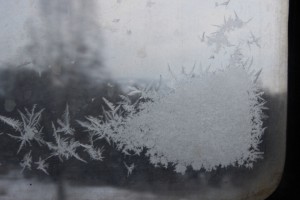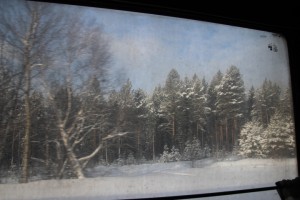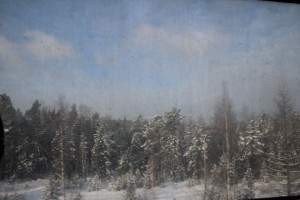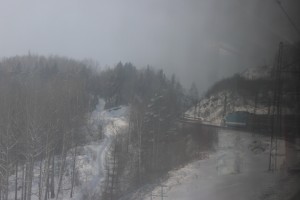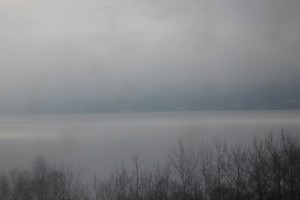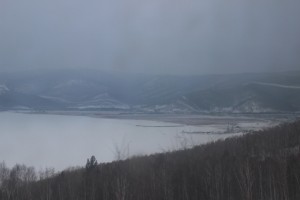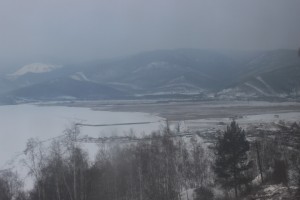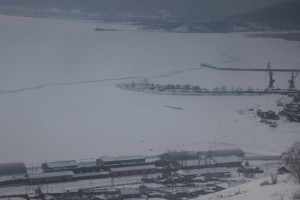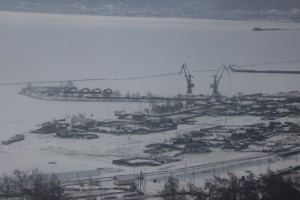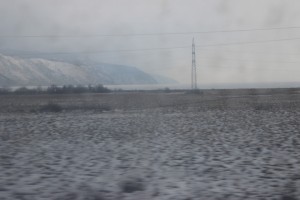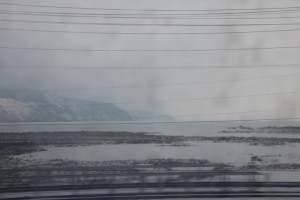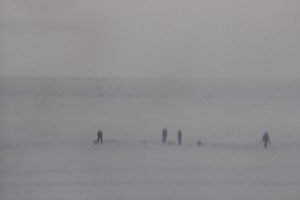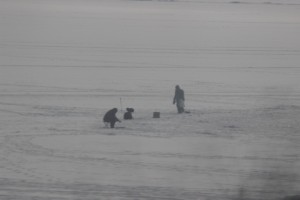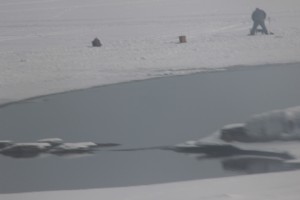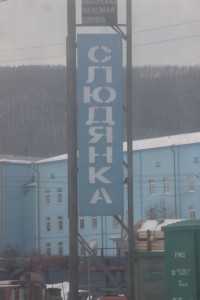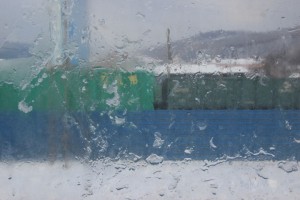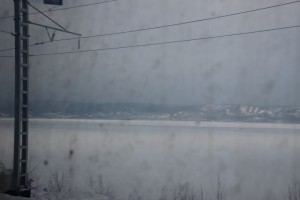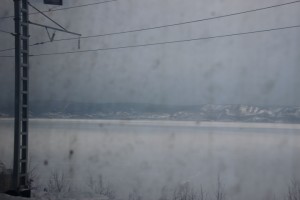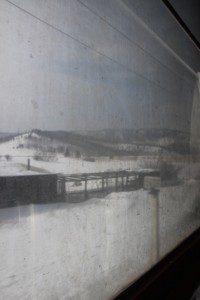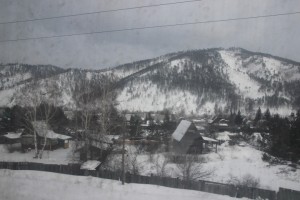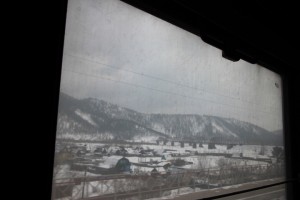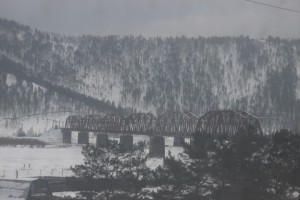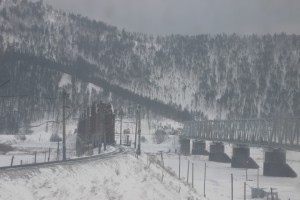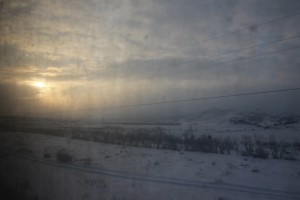Saturday 27th February
Now we have found the cold! Minus 7C is now common place during the day, and of course colder at night. Condensation inside the double glazed windows now freezes into amazing patterns.
During the night the train continued through mountains and forest passing Kuytun which means ‘cold’ in the language of the Buryat people because of the cold springs in the area, but our experience is of the temperature. Another appropriately named place some 70km down the line is Zima, which means ‘winter’. Irkutsk was reached at 7:30 a.m. The city stands on the Angara River which is the only river to leave Lake Baikal, to which we are making good progress. Nearly 100km east from here we get our first view of Lake Baikal as we snake downwards to the lakeside.
The station at Slyudyanka is only 500m from the lake but our stop does not allow time for a visit. The railway now passes around the south and southeastern sections of the lake which gives the visitor an idea of how big this lake (the largest freshwater lake in the world) really is as this part of the journey is 250km. Along this southern edge is wasteland best described as a flood plain. To most people the following is unusual and occurs because the Angara River flows northwards to the Arctic Ocean. In winter the lower course (nearest the ocean) of the river freezes first. This prevents the water of the Angara to flow to the ocean so there is flooding along the river and lake. Conversely, in summer, the ice of the lake and the river melt first preventing the water from reaching the ocean so flooding occurs in the lower course but over the ice until it melts.
We saw groups of men ice fishing, i.e. drilling holes in the ice and waiting for a fish to take the bait from their lines. The fish could be Siberian Muklun which one of the team ate in Moscow. It was a delicious white meaty fish.
During the day we made good progress to Ulan-Ude reaching the city at 3:20 p.m. and a temperature of -7C. During the evening we crossed more taiga to reach the Russian-Mongolian border. This crossing took a total of 4 hours with inspections from high officials. Whilst this was going on the temperatures reached -14C and afterwards we had about 8 hours to cover the 380km to Ulaanbaatar, the capital of Mongolia.
